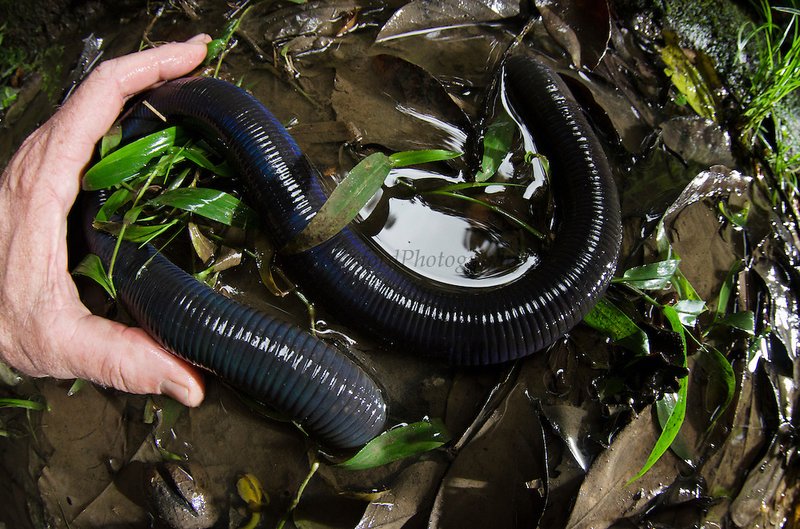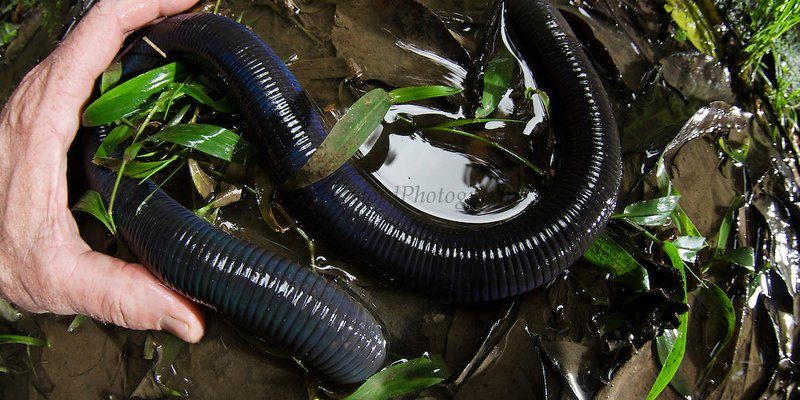
In the wild, Giant Palouse Earthworms are known to live deep underground, thriving in their native habitat. Their elusive nature has made them a subject of intrigue for scientists and earthworm enthusiasts. But what if we could bring them into a controlled environment? Could we learn more about their behavior, reproduction, and, dare I say, farm them? The answers are as winding and intricate as the worms themselves. Let’s dig deeper into the life of the Giant Palouse Earthworm in captivity and see what we can uncover.
Understanding the Giant Palouse Earthworm
The Giant Palouse Earthworm (Driloleirus americanus) is native to the Palouse region, known for its rolling hills and rich agricultural land. These earthworms are unique for their impressive size, often reaching lengths of up to three feet! They have a white, almost translucent appearance, making them look ghostly as they slither through their subterranean tunnels.
You might be wondering, what makes these worms so special? Beyond their size, they play a crucial role in the ecosystem. They help aerate the soil and aid in nutrient cycling, which supports plant growth. Unfortunately, due to habitat loss and other environmental pressures, they’ve become quite rare. That rarity sparks interest in studying whether we can replicate their living conditions in captivity.
The Habitat Needs of Giant Palouse Earthworms
In their natural habitat, the Giant Palouse Earthworm thrives in specific soil types that are rich in clay and organic matter. These conditions are vital because they provide the moisture and nutrients the worms need to survive. When considering captivity, replicating these conditions is key for any potential study or farming effort.
Creating a suitable habitat involves more than just dirt. The temperature, humidity, and depth are all factors that significantly impact their wellbeing. Ideally, you’d want to maintain a consistent temperature between 55°F to 70°F and keep the soil moist but not soggy. It’s a bit like creating a mini ecosystem—everything needs to be just right for these worms to thrive.
Can Giant Palouse Earthworms Be Studied in Captivity?
Studying the Giant Palouse Earthworm in captivity poses exciting possibilities. Scientists are keen to learn more about their behavior, reproduction, and even how they can contribute to soil health. Captive studies could help shed light on their lifecycle and reproductive habits that remain largely mysterious.
To conduct such studies effectively, researchers would need to establish controlled environments that mirror the worms’ natural habitats. This means not just putting them in a box of dirt but creating a whole ecosystem that allows them to interact with their environment in ways they would in the wild. It’s a fascinating challenge that can provide critical insights into their biology and ecology.
Challenges in Captive Research
Even though studying these worms in captivity is exciting, it’s not without challenges. The first hurdle is simply getting enough individuals for study. Since they are rare and often difficult to find, collecting them in numbers is tricky. Conservation laws in place to protect the species also add another layer of complexity.
Moreover, researchers may face difficulties in maintaining the delicate balance of their habitat. Just a small change in temperature or moisture levels can stress the worms, impacting their health and behavior. Effective monitoring systems are crucial to ensure their captive environment mimics the conditions they thrive in.
The Potential for Farming Giant Palouse Earthworms
The question of whether we can farm Giant Palouse Earthworms is intriguing. In theory, if we can create the right conditions, farming them could become a reality. This could provide both researchers and the agricultural community with valuable insights into soil health and ecosystem management.
However, turning this theory into practice requires careful planning. First, one must consider the ethical implications of farming a species that’s endangered. Would farming them impact their natural populations? The idea is exciting, but it must be approached with caution and responsibility.
Steps to Potential Farming
If someone were to pursue farming Giant Palouse Earthworms, there are several steps to consider:
- Secure a Safe Environment: Establish a habitat that mirrors their natural conditions.
- Obtain Environmental Permits: Ensure compliance with any legal requirements related to conservation.
- Monitor Conditions: Use technology to keep close tabs on soil conditions, temperature, and humidity.
- Research Breeding: Understand their reproductive cycles to maintain and grow the population.
Each step involves significant effort and research, but if done correctly, it could lead to a better understanding of the species.
What We Can Learn from Captive Studies
Studying Giant Palouse Earthworms in captivity can provide invaluable insights not just about the worms themselves but about soil health and ecosystem dynamics. By understanding their physiology and behavior, researchers can potentially discover new ways to enhance soil quality in agriculture, contributing to sustainable farming practices.
For instance, by learning how these worms interact with soil microorganisms, we can begin to apply similar principles to enhance crop yields in more traditional farming systems. It’s like unlocking a natural secret to healthier soils and better harvests!
Broader Implications for Soil Conservation
The knowledge gained from these studies can have broad implications. As the world faces increasing challenges related to soil degradation and food security, understanding how to cultivate beneficial species like the Giant Palouse Earthworm can help develop sustainable agricultural practices.
Beyond agriculture, these studies could inform conservation strategies for other endangered species, highlighting the interconnectedness of all living systems. It’s a reminder that small creatures like this giant worm can play a big role in our ecosystem.
The Giant Palouse Earthworm is more than just a worm; it’s a symbol of the intricate connections in our natural world. While farming and studying them in captivity may present challenges, the potential benefits are worth exploring. With careful thought and responsible practices, we could unlock a treasure trove of knowledge that benefits not only science but also agriculture and conservation efforts.
So, the next time you think about earthworms, remember the Giant Palouse Earthworm and the mysteries it holds beneath the surface. Who knows? Maybe one day, you’ll find these fascinating creatures thriving in a controlled environment, helping us understand the vital role they play in our ecosystems.

